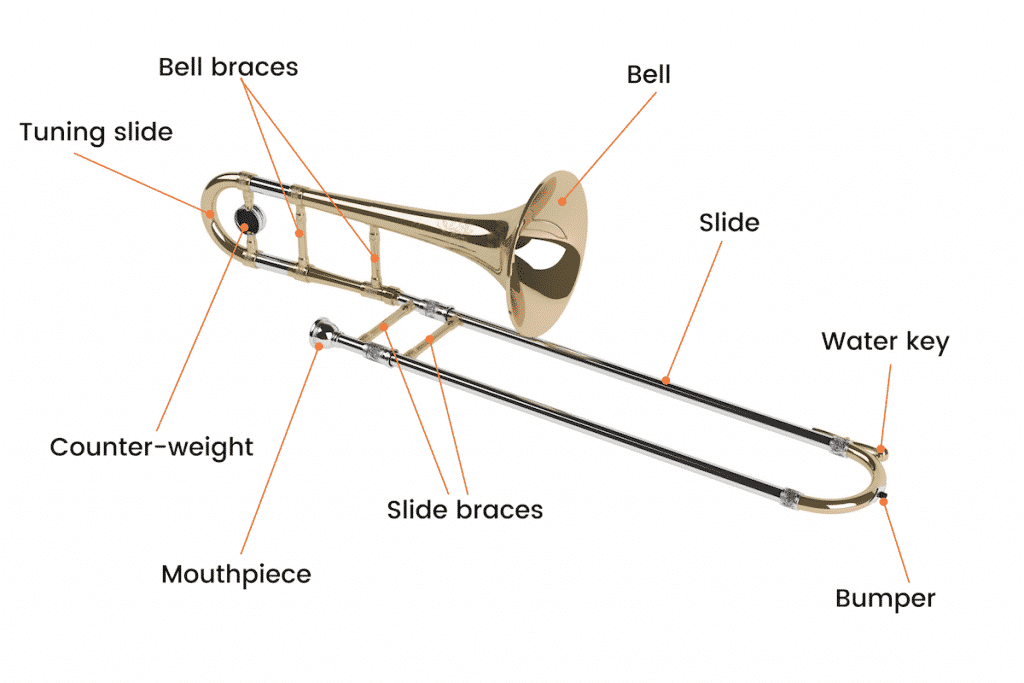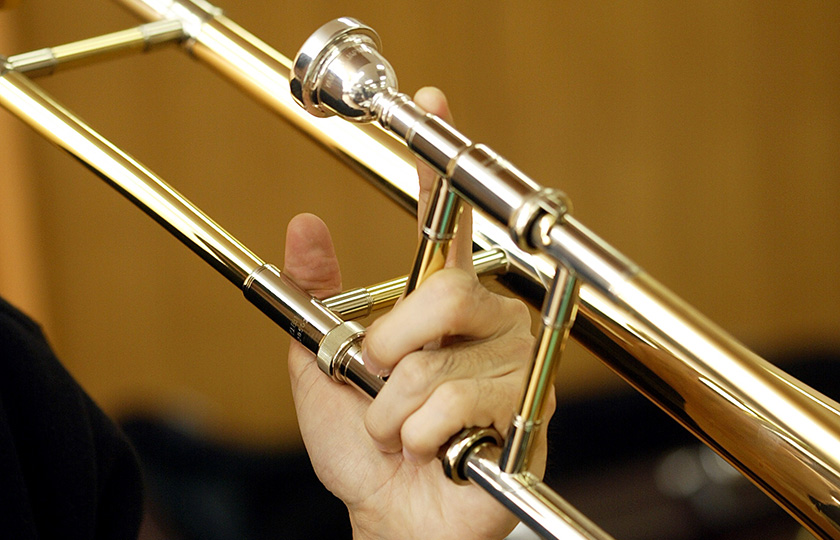How Is the Pitch Change on a Trombone
The fundamental frequency of the harmonic series can be varied by adjusting the length of the tubing using the instruments valve slide key or crook system while the players embouchure lip tension and air. The slide on a trombone enables the player to change his or her pitch in a truly smooth and stepless fashion.

The Different Parts Of A Trombone Hello Music Theory
Trombones are usually constructed with a slide that is used to change the pitch.

. By buzzing the lips faster or slower the player can. How the pitch is changed The pitch of a brass instrument depends on the volume of air that is vibrating as well as the speed at which the players lips vibrate. This is done by tightening and loosening the tension of your lips this will create a higher or lower sounding buzz.
To get all of the pitches you need change the Harmonic series. For example in the piano there is a very clear delineation between C D and F. Unfortunately this change in velocity of the sound doesnt affect all instruments equally.
The slide is moved to make the tubing longer or shorter changing the pitch of the instrument. Up to 24 cash back The slides of the trombone change the pitch of the sound coming out of the bell. Trombone slides are made up of two main parts.
If you extend the slide then the pitch lowers and if you contract the slide then the pitch rises. Change pitch by changing your lip position on the mouthpiece but dont completely readjust. F2 4705 hertz.
F2 3284532542 4662 hertz tuning Bb f2 1009311 4662 hz. The trombone is the only brass instrument that doesnt use valves to change the pitch within a harmonic series of notes. Trombones do not have finger holes so a trombone player changes the sound with his or her mouth rather than his or her fingers.
When you are playing with your trombone choir or brass quintet you are tuning subconsciously to more of. The combined resonances resemble a harmonic series. The Slide changes the pitch of the notes on the trombone.
Practice buzzing with just the mouthpiece to train your lips and your ears to buzz on pitch. The tuning slide can be pulled out or pushed in so that the trombone is in tune with the rest of the group. Keep in mind that there are two systems of tuning.
The second slide is a brass handle allowing you extend down the main slide to change the pitch of the sound. Hence the longer you extend the slide the lower the pitch will be. This is true of all brass instruments but it is particularly true for the trombone.
Aim lower for low notes and push from your gut. When you play with a piano or guitar for example you are playing equal temperament meaning each note is one fixed pitch regardless of harmonic context. Although any given black key and its neighboring white key have a half-tone difference a trombone is capable of producing quarter-tones one half a half-tone and even eighth-tones.
The more a trombone player tightens his or her lips the higher the pitch produced. F2 V2V1 f1. The volume of air depends on the length of the tube.
The valves follow the same schema as other valved instruments-the first valve lowers the pitch by one step the second valve by a half-step and the third valve by one and a half steps. Pitch not just a matter of slide position but of ear. A high buzz will be created by tight lips and a fast stream of air pushed.
A trombone player varies the sound produced at a single position by changing how he or she blows into the instrument. The main slide is a stationary long brass tube that covers the second slide. A longer tube means a larger volume of air hence lower pitch.
The parts of a trombone. Valve trombones use three valves singly or in combination instead of the slide. Thats roughly 15 closer to a B natural than the original tuning pitch.
The pitch of a brass instrument corresponds to the lowest playable resonance frequency of the open instrument. The player uses the mouthpiece to create the sound.

The Structure Of The Trombone The Trombone The Instrument That Extends And Retracts Musical Instrument Guide Yamaha Corporation

Musical Instrument Families Instrument Families Homeschool Music Music Education

The Structure Of The Trombone How To Play The Scale Musical Instrument Guide Yamaha Corporation
Comments
Post a Comment